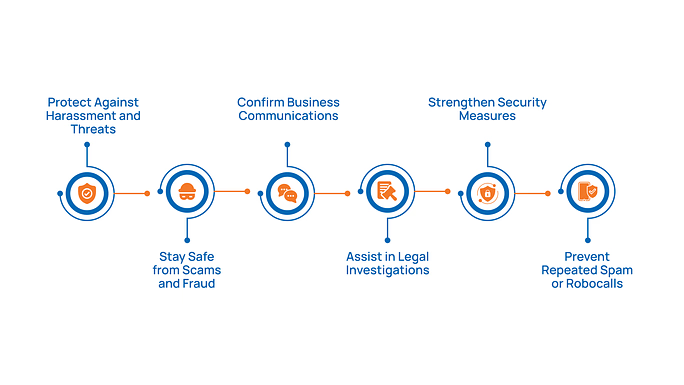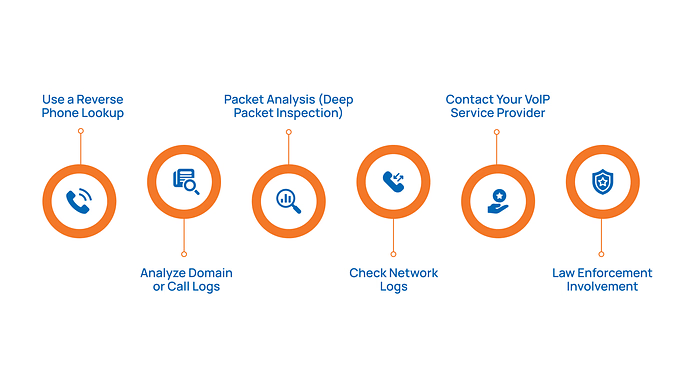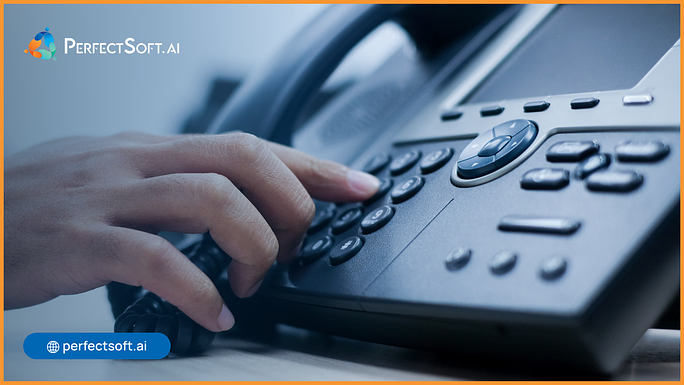Key Takeaways
|
Types of VoIP Numbers and How They Work in Business Communication
VoIP numbers play a vital role in modern business communication, but not all VoIP numbers function the same way. Below are the types of VoIP numbers and how they work:Fixed VoIP Numbers
Fixed VoIP numbers link to a specific physical address. The service provider registers these numbers to a known location. Businesses often use fixed VoIP numbers because they give credibility. These numbers are easier to trace because they are associated with a specific address.Non-Fixed VoIP Numbers
Non-fixed VoIP numbers do not link to any physical address. Users can register them with only an email or a payment method. They are popular among individuals who value flexibility or privacy. These numbers are more complex to trace because there is no record of their location.How VoIP Numbers Operate
VoIP numbers work by converting voice into digital data. This data travels over the internet in small packets. The process allows users to make calls using computers, smartphones, or VoIP phones. It does not rely on traditional phone lines. Session Initiation Protocol (SIP) sets up and manages VoIP calls. It controls the start, progress, and end of each call. SIP ensures both parties connect at the right time. It also handles features like call transfer and hold. Real-Time Transport Protocol (RTP) carries the voice data during a call. It breaks the voice into small packets and sends them. RTP ensures the packets reach the other end in the correct order. This process helps deliver clear audio in real time.The Importance of Tracing VoIP Numbers in Business Communication
 Tracing a VoIP number is often necessary to protect yourself, your business, or to support legal processes. VoIP calls can originate from anywhere in the world, and while many are legitimate, others may be associated with fraudulent or harassing activities. Here are essential reasons why tracing these calls matters:
Tracing a VoIP number is often necessary to protect yourself, your business, or to support legal processes. VoIP calls can originate from anywhere in the world, and while many are legitimate, others may be associated with fraudulent or harassing activities. Here are essential reasons why tracing these calls matters:
1. Protect Against Harassment and Threats
Unknown VoIP numbers can be used for harassment, threats, or sending inappropriate messages. Tracing the source helps stop unwanted communication. It gives you the information you need to block or report the caller.2. Stay Safe from Scams and Fraud
VoIP calls are commonly used in phishing and scam attempts. Fraudsters may pretend to be from trusted sources, like banks or government agencies. Tracing a VoIP number helps verify if the call is genuine. This can prevent financial loss or data theft.3. Confirm Business Communications
Businesses receive many VoIP calls from customers, partners, or vendors. Tracing helps confirm the caller's identity. This is important for verifying transactions, agreements, or service requests. It ensures you do not fall victim to fake business calls.4. Assist in Legal Investigations
Tracing VoIP calls can provide vital evidence in cases of fraud, stalking, or cybercrime. Law enforcement agencies rely on caller data to track suspects. VoIP traces may support criminal investigations and court cases.5. Strengthen Security Measures
Every VoIP call carries technical details, such as caller ID, IP address, and CNAM (Caller ID Name). These details can reveal patterns of suspicious activity. By tracing calls, individuals and organizations can detect and prevent security breaches.6. Prevent Repeated Spam or Robocalls
Many spam calls use VoIP numbers because they are cheap and easy to set up. Tracing the number helps identify the source. This can help in reporting the number to authorities or adding it to blocklists.
Call Data Used in Tracing
|
Can VoIP Numbers Be Traced? Challenges and Realities
Tracing a VoIP number is possible. But it is not always easy. The success of tracing depends on the type of VoIP number. It also depends on the tools or methods used. Fixed VoIP numbers are easier to trace because they are associated with a physical address. Non-fixed VoIP numbers are more difficult to trace because they are not tied to a specific location. The caller’s technical setup also affects traceability. Here are some of challenges faced by businesses in tracing these numbers:-
Use of VPNs and Anonymizing Tools
-
Caller ID Spoofing
-
Non-Fixed VoIP Numbers
How to Trace a VoIP Number: Methods That Work for Businesses
 Tracing a VoIP call can be a challenging task. But some methods can help you find useful details about the caller. These methods are most effective when combined with suitable tools and the appropriate technical setup.
Tracing a VoIP call can be a challenging task. But some methods can help you find useful details about the caller. These methods are most effective when combined with suitable tools and the appropriate technical setup.
-
Use a Reverse Phone Lookup
-
Analyze Domain or Call Logs
-
Packet Analysis (Deep Packet Inspection)
-
Check Network Logs
- Timestamp: The exact date and time when the call started and ended. This helps track call activity over time.
- Source IP address: The IP address of the device that made the call. This can reveal the location from which the call originated.
- Destination IP address: The IP address of the device that received the call. This helps confirm where the call was directed.
- Call duration: The length of time the call lasted. This can be useful in identifying patterns or suspicious behavior.
- Protocol used: The type of protocol (such as SIP or RTP) used during the call. SIP handles call setup, like ringing the other phone. RTP carries the voice data once the call is connected.
-
Contact Your VoIP Service Provider
-
Law Enforcement Involvement
- Subpoenas and warrants: Authorities can request data from VoIP service providers. This may include Call Detail Records (CDRs), IP logs, or account registration details.
- Access to provider records: In many countries, providers are required by law to share this data upon request. The data helps trace the origin and path of suspicious calls.
- Cross-border cooperation: If a VoIP call comes from another country, local authorities may work with foreign agencies. International cooperation ensures the trace continues across borders.
VoIP Call Tracing: When Should Authorities Step In?
You should contact the authorities when a VoIP call poses a risk to your safety, security, or business. Not all unwanted calls require legal action, but certain situations demand immediate help from law enforcement. You need to contact the authorities if:- You receive threats or harassment. If a caller uses a VoIP number to threaten, intimidate, or repeatedly harass you, report it. Authorities can help trace the caller and take action.
- You suspect fraud or scams. If the caller tries to steal money, personal data, or business information, contact the police or a fraud reporting center. VoIP calls are often used in scams because they are harder to trace.
- The call relates to illegal activities, such as suspected crimes like identity theft, stalking, or trafficking; law enforcement agencies are best equipped to investigate.
- There are repeated anonymous calls causing harm. A pattern of suspicious VoIP calls that affects your peace of mind or business operations should be reported to the relevant authorities. Authorities can work with service providers to trace these calls.
VoIP and Business Implications: Tips for Businesses
Managing VoIP traceability is crucial for maintaining your business's security and compliance. Here are essential tips to help you handle VoIP effectively in customer support, sales, and daily operations.-
Use VoIP Systems That Support Caller Verification
-
Log and Monitor All Calls for Security and Quality
-
Keep Call Records for Compliance and Audits
-
Create and Enforce VoIP Security Policies
-
Protect Customer Data in All VoIP Communications
-
Adopt STIR/SHAKEN Protocols
-
Use Advanced Analytics for VoIP Monitoring
Enhance VoIP Quality and Streamline Your Contact Center with PerfectSoft.AI
 At PerfectSoft.AI, we deliver intelligent, high-performance contact center solutions to improve customer satisfaction, boost agent productivity, and streamline operations.
Whether you manage a large-scale BPO, a customer service department, or an outbound sales team, our technology helps you stay connected across all channels while ensuring crystal-clear
We provide advanced VoIP-based Telecom Voice Services that guarantee:
At PerfectSoft.AI, we deliver intelligent, high-performance contact center solutions to improve customer satisfaction, boost agent productivity, and streamline operations.
Whether you manage a large-scale BPO, a customer service department, or an outbound sales team, our technology helps you stay connected across all channels while ensuring crystal-clear
We provide advanced VoIP-based Telecom Voice Services that guarantee:
- High-Quality Voice Calls – Clear and uninterrupted voice communication.
- Reliable Connectivity – Stable and secure connections across all regions.
- Global Reach – Seamless communication with teams and customers worldwide.


Comments